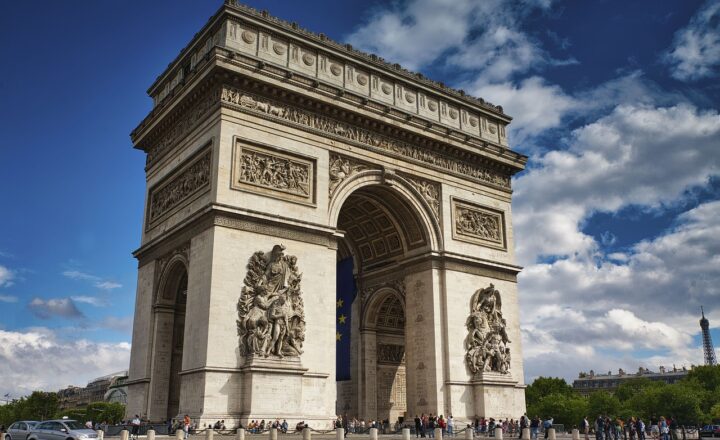Why Some Train Stations Are More Than Just Transit Hubs
November 11, 2024

Train stations are often viewed simply as places to catch a train or wait for a connection. However, many train stations around the world have transcended their roles as mere transit hubs to become vibrant centers of commerce, culture, and community engagement. In this article, we will explore how these architectural wonders reflect a rich tapestry of history, art, and urban life, transforming the way people perceive transportation centers.
1. A Historical Perspective on Train Stations
The rise of the railway network in the 19th century marked a transformative period in human mobility and societal structure. As cities expanded, train stations became a focal point for economic and cultural exchange. Here are a few pivotal points in history that illustrate this evolution:
- The Birth of the Railway Era: Established in the 1820s, the first locomotive-powered public railway opened in England, linking cities and facilitating commerce. Train stations were built to accommodate the influx of passengers and freight, leading to a construction boom in grand, architectural designs like St. Pancras in London and the Gare de Lyon in Paris.
- Craftsmanship and Design: Architectural styles such as Beaux-Arts and Art Deco can be observed in these stations, showcasing skilled craftsmanship and attention to detail. Notable examples include the iconic Grand Central Terminal in New York City and the beautifully designed Termini in Rome.
- Cultural Significance: Train stations served as gateways for immigrants, artists, and travelers, shaping cultural narratives in cities. They became sites for human stories, filled with hope and adventure, as people embarked on journeys to new lives or economic opportunities.
These historical moments contribute to our understanding of how train stations adapt and evolve, becoming critical components of urban landscapes.
2. Architectural Marvels That Attract Tourists
Iconic train stations are often more than places to catch a train—they capture the imagination with their grandeur and aesthetics. Architectural features that make these stations captivating include:
- Stained Glass and Skylights: Beautiful stained-glass windows and skylights not only illuminate the waiting areas but also enhance the overall ambiance. Consider the breathtaking glass ceilings of the Chicago Union Station or the stunning mosaics at the Milan Centrale.
- Art Installations: Many train stations integrate art installations that reflect the local culture and history, such as the murals at the King’s Cross Station in London or the sculptures at the Philadelphia 30th Street Station, making the stations destinations in their own right.
- Public Spaces and Parks: Some modern train stations incorporate eco-friendly designs, including public spaces and green areas like the beautiful gardens found at the Toronto Union Station, allowing travelers to relax and enjoy open spaces amidst architectural magnificence.
These elements turn train stations into places of exploration and enjoyment, elevating them above mere functional buildings.
3. Cultural Hubs of Community and Commerce
Beyond transportation, many train stations have become cultural and commercial hubs, providing wide-ranging services and experiences:
- Markets and Food Halls: Train stations like the one in Amsterdam and the Philadelphia 30th Street Station have transformed distinctive spaces into bustling marketplaces with food stalls, artisanal goods, and local delicacies, fostering a sense of community while catering to travelers and locals alike.
- Event Spaces: Numerous train stations host events, exhibitions, and concerts, using their vast, impressive lobbies as venues. For example, the historic Union Station in Washington, D.C. has been a site for various cultural festivals and holiday events, encouraging social interaction.
- Retail Outlets: Retail stores and boutiques located within or near train stations cater to both travelers and locales. High-end fashion stores at Paris’s Gare Saint-Lazare, for instance, attract shoppers, making it an essential stop for luxury retail experiences.
By integrating diverse functions, train stations foster vibrant ecosystems, attracting multiple demographics and enhancing the user experience.
4. Stories of Transformation: Notable Examples
Several train stations worldwide exemplify the transition from simple transit hubs to multifaceted environments:
- Grand Central Terminal, New York City: This iconic station not only serves as a transit hub but also houses shops, restaurants, and an impressive market. Its historic architecture, coupled with cultural events like free concerts, has made it a beloved landmark.
- Antwerp Central Station, Belgium: Dubbed one of the most beautiful train stations in the world, it features stunning marble columns, intricate mosaics, and a grand internal hall. It also hosts a variety of dining options and shops, catering to a diverse audience.
- Shinjuku Station, Tokyo, Japan: As one of the busiest railway stations globally, Shinjuku combines functionality with cultural experiences. From bustling shopping streets to themed cafés, it serves millions of passengers with a unique blend of commerce and culture.
These examples show how train stations can fuel urban development while preserving cultural heritage, making them significant landmarks for travelers and residents alike.
5. The Future of Train Stations: Beyond Transit
Looking ahead, the role of train stations is projected to evolve further with advancements in technology and urban planning:
- Integration of Smart Technologies: The adoption of technologies like AI for passenger flow management, digital kiosks for information, and smart ticketing systems enhances the travel experience, transforming the stations into technological hubs.
- Sustainability Goals: As cities focus on environmental sustainability, many train stations are being redesigned with green practices in mind. The integration of solar panels, green roofs, and eco-friendly materials ensures a sustainable future for these structures.
- Community Engagement: Future train stations are likely to become even more community-oriented, with collaboration spaces, art exhibitions, and venues for public discourse that foster communal interaction while retaining their transit focus.
These trends hint at a dynamic future in which train stations remain indispensable while adapting to the changing needs of society.
Conclusion: More Than Just Transit Hubs
In conclusion, the evolution of train stations from mere transit hubs into multifaceted cultural, commercial, and community centers highlights the importance of design and historical context in enriching urban life. These architectural gems are more than just waiting rooms for trains; they encapsulate the essence of connectivity and community, making them symbols of adventure, culture, and the spirit of exploration.
As travelers seek unique experiences, train stations need to adapt further, blending tradition and modernity to become cherished landmarks that reflect the dynamics of contemporary society.







